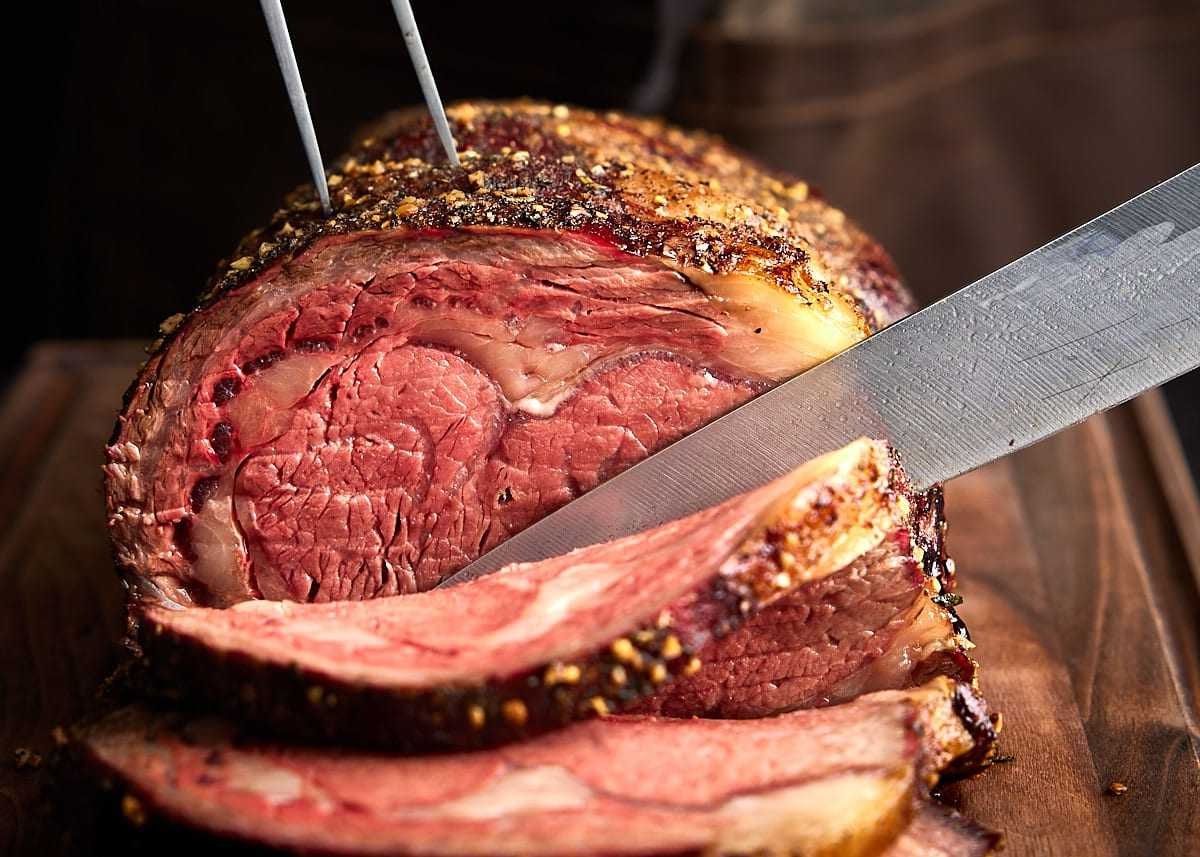Home>Culinary & Beverages>The Ultimate Guide To High Heat Oil: Benefits, Uses, And Recommendations


Culinary & Beverages
The Ultimate Guide To High Heat Oil: Benefits, Uses, And Recommendations
Published: February 22, 2024
Discover the benefits, uses, and top recommendations for high heat oils in culinary and beverage applications with our ultimate guide. Master the art of cooking with high heat oils!
(Many of the links in this article redirect to a specific reviewed product. Your purchase of these products through affiliate links helps to generate commission for Temperatures.com, at no extra cost. Learn more)
Table of Contents
Introduction
When it comes to culinary pursuits, the choice of cooking oil can significantly impact the flavor, texture, and nutritional value of a dish. High heat oils, in particular, play a crucial role in achieving the desired results when cooking at elevated temperatures. Whether you're searing a succulent steak, stir-frying vibrant vegetables, or deep-frying delectable treats, the type of oil you use can make all the difference.
In this comprehensive guide, we will delve into the world of high heat oils, exploring their benefits, common uses, and how to select the right oil for your culinary endeavors. By understanding the unique properties of high heat oils and learning how to harness their potential, you can elevate your cooking to new heights and savor the delectable results.
Join us on this journey as we uncover the secrets of high heat oils, unravel their culinary magic, and equip you with the knowledge to make informed choices in the kitchen. Whether you're a seasoned home cook or an aspiring chef, this guide will empower you to wield the power of high heat oils with confidence and finesse.
So, let's embark on this flavorful exploration and unlock the potential of high heat oils, transforming ordinary dishes into extraordinary culinary creations. Get ready to infuse your cooking with a touch of expertise and elevate your culinary repertoire to impressive new heights.
Understanding High Heat Oils
High heat oils are a crucial component of culinary artistry, especially when it comes to cooking techniques that involve elevated temperatures. These oils are specifically chosen for their ability to withstand heat without breaking down or producing harmful compounds. Understanding the characteristics of high heat oils is essential for achieving optimal results in various cooking methods.
High heat oils are typically those with a high smoke point, which refers to the temperature at which the oil begins to smoke and degrade. When an oil reaches its smoke point, it can impart unpleasant flavors to the food and lose its nutritional value. Therefore, high heat oils are selected for their stability under intense heat, allowing for a wide range of cooking applications without compromising the quality of the dish.
In addition to their high smoke points, high heat oils often possess neutral flavors, making them versatile for different culinary creations. This neutrality allows the natural flavors of the ingredients to shine through, enhancing the overall taste of the dish without overpowering it with the oil's own characteristics.
It's important to note that not all oils are suitable for high heat cooking. Some oils, such as extra virgin olive oil and flaxseed oil, have low smoke points and are better suited for drizzling over salads or using in low-heat cooking methods. Understanding the distinction between high heat oils and those more suited for lower temperatures is essential for achieving culinary success.
By grasping the unique properties of high heat oils, cooks can confidently select the most appropriate oil for specific cooking techniques, whether it's searing, sautéing, frying, or grilling. This understanding empowers individuals to harness the full potential of high heat oils, ensuring that their culinary creations are infused with delightful flavors and textures while maintaining the integrity of the chosen oil.
In the next sections, we will explore the numerous benefits of using high heat oils, their common uses in the kitchen, and how to select the right oil for various cooking applications. By delving deeper into the world of high heat oils, you'll gain valuable insights that will elevate your cooking endeavors to new heights.
Benefits of Using High Heat Oils
-
High heat oils offer exceptional stability when exposed to elevated temperatures, making them ideal for various cooking methods such as searing, frying, and grilling. This heat resilience ensures that the oil maintains its integrity, preventing the development of off-flavors and preserving the nutritional quality of the dish.
-
The ability of high heat oils to withstand intense heat without smoking or breaking down allows for consistent and uniform cooking. Whether you're searing a steak to perfection or achieving a crispy exterior on fried foods, high heat oils contribute to the desired texture and appearance of the final dish.
-
Using high heat oils can enhance the overall flavor profile of a dish by providing a neutral base that allows the natural flavors of the ingredients to shine through. This neutrality ensures that the oil complements the dish without overpowering or altering its inherent taste, resulting in a harmonious and well-balanced culinary creation.
-
High heat oils are a valuable ally in achieving culinary excellence, as they facilitate efficient heat transfer during cooking. This property enables ingredients to cook evenly and efficiently, ensuring that the flavors are developed to their full potential while maintaining the desired texture and moisture content.
-
Incorporating high heat oils into your cooking repertoire can contribute to the creation of delectable and visually appealing dishes. Whether you're aiming for a golden-brown crust on a seared protein or perfectly crisp fried delicacies, high heat oils play a pivotal role in achieving culinary perfection.
-
The use of high heat oils can also impart a satisfying texture to cooked foods, contributing to the overall sensory experience of a dish. From achieving a delightful crunch in fried foods to creating a succulent and tender mouthfeel in sautéed dishes, high heat oils elevate the tactile enjoyment of culinary creations.
-
High heat oils offer a practical advantage in the kitchen by providing a versatile and reliable cooking medium for a wide range of culinary applications. Their stability and adaptability make them indispensable for achieving consistent and exceptional results across various cooking techniques and recipes.
In summary, the benefits of using high heat oils encompass enhanced stability, improved flavor retention, efficient heat transfer, visual appeal, texture enhancement, and versatile utility in the kitchen. By harnessing these advantages, cooks can elevate their culinary creations and delight their palates with exceptional dishes that showcase the remarkable impact of high heat oils.
Common Uses of High Heat Oils
High heat oils are prized for their versatility and resilience, making them indispensable in a wide array of culinary applications. Understanding the common uses of high heat oils is essential for harnessing their full potential in the kitchen. Whether you're aiming to achieve a perfect sear, crisp up delectable fried treats, or infuse vibrant flavors into stir-fried dishes, high heat oils play a pivotal role in elevating the outcome of various cooking techniques.
-
Searing: High heat oils, such as avocado oil and peanut oil, are ideal for achieving a flawlessly seared exterior on proteins such as steaks, chops, and fillets. Their high smoke points and heat stability allow for intense heat application, resulting in a caramelized crust that locks in the natural juices of the meat, creating a succulent and flavorful outcome.
-
Stir-Frying: When it comes to stir-frying, high heat oils excel in evenly coating the ingredients and rapidly transferring heat throughout the dish. Oils like sesame oil and grapeseed oil are commonly used for stir-frying, imparting a delicate nuttiness and enhancing the overall flavor profile of the dish while maintaining the desired texture and vibrancy of the vegetables and proteins.
-
Deep-Frying: High heat oils are essential for achieving the perfect crunch and golden-brown hue in deep-fried delicacies. Whether it's crispy tempura, golden French fries, or indulgent donuts, oils with high smoke points, such as canola oil and sunflower oil, ensure that the foods cook quickly and evenly, resulting in a delightful crispy exterior and a moist, tender interior.
-
Grilling: When grilling, high heat oils are used to prevent sticking and impart a delectable charred flavor to meats, seafood, and vegetables. Oils like grapeseed oil and safflower oil are well-suited for grilling due to their ability to withstand the intense heat of the grill, allowing for beautiful grill marks and enhanced smoky nuances in the grilled dishes.
-
Sauteing: High heat oils are a go-to choice for sautéing, as they facilitate rapid and even cooking of ingredients while preserving their natural flavors and textures. Whether it's sautéed garlic, onions, or a medley of vegetables, high heat oils contribute to the development of complex flavors and a delightful caramelization, elevating the overall depth of the dish.
By incorporating high heat oils into these common culinary practices, cooks can achieve exceptional results, from achieving a perfect sear to creating crispy and flavorful dishes. The versatility and resilience of high heat oils make them indispensable in the kitchen, allowing for the creation of a diverse range of delectable and visually appealing dishes that showcase the remarkable impact of high heat oils.
Choosing the Right High Heat Oil for Cooking
Selecting the right high heat oil for cooking is a critical decision that can significantly influence the flavor, texture, and overall quality of your culinary creations. With a myriad of options available, understanding the key factors to consider when choosing a high heat oil is essential for achieving exceptional results in the kitchen.
-
Smoke Point: The smoke point of an oil is a crucial consideration when selecting a high heat oil for cooking. Different cooking techniques require varying levels of heat, and choosing an oil with a smoke point that exceeds the intended cooking temperature is essential to prevent the oil from breaking down and imparting undesirable flavors to the dish.
-
Flavor Profile: While high heat oils are prized for their neutral flavors, some oils, such as avocado oil and sesame oil, offer subtle nuances that can enhance the overall taste of the dish. Consider the flavor profile of the oil and how it complements the ingredients in your recipe to achieve a harmonious and well-balanced flavor profile.
-
Nutritional Value: High heat oils vary in their nutritional composition, including levels of monounsaturated and polyunsaturated fats. Understanding the nutritional attributes of different oils can guide your selection based on dietary preferences and health considerations.
-
Versatility: Opt for high heat oils that offer versatility in the kitchen, allowing you to use them across a wide range of cooking techniques and recipes. Versatile oils, such as grapeseed oil and sunflower oil, provide flexibility in culinary applications, making them valuable additions to your cooking repertoire.
-
Availability and Storage: Consider the availability of the high heat oil and its shelf life to ensure convenience and freshness in your culinary endeavors. Some oils, like canola oil and peanut oil, are widely accessible and have extended shelf lives, making them practical choices for regular use in the kitchen.
By carefully evaluating these factors, you can make informed decisions when choosing the right high heat oil for your cooking needs. Whether you're aiming to achieve a perfect sear, impart delicate flavors in stir-fried dishes, or create crispy delights through deep-frying, selecting the appropriate high heat oil is a pivotal step towards culinary excellence. With a discerning approach to oil selection, you can elevate your cooking endeavors and delight your palate with exceptional dishes that showcase the remarkable impact of high heat oils.
Read more: Using The Internet To Gather February Temperature Information: A High School Senior’s Approach
Recommendations for High Heat Oils
When it comes to selecting high heat oils for your culinary adventures, several options stand out for their exceptional performance and versatility in the kitchen. These recommendations encompass a diverse range of high heat oils, each offering unique attributes that cater to specific cooking techniques and flavor profiles. Whether you're aiming to achieve a perfect sear, infuse vibrant flavors into stir-fried dishes, or create crispy delights through deep-frying, these recommended high heat oils are poised to elevate your culinary creations to impressive new heights.
-
Avocado Oil: With its high smoke point and mild, buttery flavor, avocado oil is an excellent choice for high heat cooking methods such as searing and grilling. Its versatility and ability to withstand intense heat make it a valuable addition to your culinary arsenal, allowing for the creation of beautifully seared proteins and grilled dishes with a delightful, subtle richness.
-
Grapeseed Oil: Known for its neutral flavor and high smoke point, grapeseed oil is well-suited for stir-frying, sautéing, and grilling. Its light, clean taste allows the natural flavors of the ingredients to shine through, while its heat stability ensures even cooking and flavor enhancement in a wide array of dishes.
-
Peanut Oil: Renowned for its distinct nutty flavor and high smoke point, peanut oil is a popular choice for deep-frying and high heat cooking. It imparts a delightful aroma and golden hue to fried foods, while its ability to maintain stability under heat results in crispy, delectable textures that elevate the sensory experience of the dish.
-
Sesame Oil: Offering a rich, nutty flavor and a high smoke point, sesame oil is a staple in Asian cuisine, particularly for stir-frying and adding depth to marinades and dressings. Its aromatic essence and heat resilience contribute to the creation of flavorful, aromatic dishes that captivate the palate with their distinctive character.
-
Sunflower Oil: With its light, neutral taste and high smoke point, sunflower oil is a versatile option for various high heat cooking techniques, including frying, roasting, and baking. Its ability to withstand elevated temperatures while preserving the natural flavors of the ingredients makes it a reliable choice for a wide range of culinary applications.
By incorporating these recommended high heat oils into your culinary repertoire, you can harness their exceptional qualities to achieve outstanding results in the kitchen. Whether you're a home cook seeking to elevate your everyday meals or a culinary enthusiast exploring new gastronomic horizons, these high heat oils offer a gateway to culinary excellence, allowing you to create delectable dishes that showcase the remarkable impact of high heat oils.
Conclusion
In the realm of culinary mastery, the choice of high heat oils holds the power to transform ordinary ingredients into extraordinary culinary creations. As we conclude this flavorful exploration of high heat oils, it becomes evident that these oils are not merely cooking mediums but essential allies in the pursuit of culinary excellence.
By understanding the unique properties and benefits of high heat oils, cooks can elevate their cooking endeavors to new heights, infusing their dishes with delightful flavors, textures, and visual appeal. The resilience of high heat oils under intense temperatures empowers individuals to achieve consistent and exceptional results across a diverse range of cooking techniques, from searing and stir-frying to deep-frying and grilling.
The benefits of using high heat oils extend beyond their heat stability, encompassing enhanced flavor retention, efficient heat transfer, visual appeal, texture enhancement, and versatile utility in the kitchen. These oils play a pivotal role in achieving culinary perfection, contributing to the creation of delectable dishes that captivate the senses and delight the palate.
In the art of selecting the right high heat oil for cooking, considerations such as smoke point, flavor profile, nutritional value, versatility, availability, and storage guide the discerning cook towards making informed choices. By carefully evaluating these factors, individuals can ensure that their chosen high heat oil aligns with the specific requirements of their culinary creations, resulting in exceptional dishes that reflect the remarkable impact of high heat oils.
The recommendations for high heat oils presented in this guide offer a diverse array of options, each tailored to cater to specific cooking techniques and flavor profiles. Whether it's the mild, buttery richness of avocado oil, the neutral versatility of grapeseed oil, the nutty aroma of peanut oil, the aromatic essence of sesame oil, or the light, neutral taste of sunflower oil, these recommended oils stand ready to elevate culinary creations with their exceptional qualities.
As we bid adieu to this exploration of high heat oils, armed with a deeper understanding of their significance and potential, we invite you to embark on your culinary journey with newfound confidence and finesse. May the remarkable impact of high heat oils infuse your dishes with delectable flavors, tantalizing textures, and visual allure, transforming every meal into a delightful culinary masterpiece.














